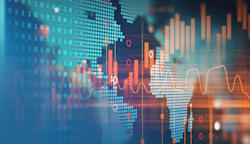Tripped Up by the ‘Money Illusion’
Overcoming the money illusion trap can help your clients make informed decisions by understanding the difference between nominal and real dollars, prices and yields.
By Meir Statman, Ph.D.
Perspectives /By Hal Hershfield, Ph.D.
Perspectives /By Meir Statman, Ph.D.
Perspectives /By Meir Statman, Ph.D.
Perspectives /By Hal Hershfield, Ph.D.
Perspectives /By Meir Statman, Ph.D.
Perspectives /By Hal Hershfield, Ph.D.
Perspectives /By Meir Statman, Ph.D.
Perspectives /By Hal Hershfield, Ph.D.
Perspectives /By Camelia Kuhnen, Ph.D.
Perspectives /By Meir Statman, Ph.D.
Perspectives /By Meir Statman, Ph.D.
Perspectives /By Hal Hershfield, Ph.D.
Perspectives /By Hal Hershfield, Ph.D.
Perspectives /By Meir Statman, Ph.D.
Perspectives /By Hal Hershfield, Ph.D.
Perspectives /By Meir Statman, Ph.D.
Perspectives /By Hal Hershfield, Ph.D.
Perspectives /By Meir Statman, Ph.D.
Perspectives /By Eduardo Repetto, Ph.D.
Perspectives /By Suzanne B. Shu, Ph.D.
Perspectives /By Meir Statman, Ph.D.
Perspectives /
By Hal Hershfield, Ph.D.
Perspectives /By Meir Statman, Ph.D.
Perspectives /By Daniel Ong, CFA
Perspectives /By Hal Hershfield, Ph.D.
Perspectives /By Meir Statman, Ph.D.
Perspectives /By Camelia Kuhnen, Ph.D.
Perspectives /By Meir Statman, Ph.D.
Perspectives /By Hal Hershfield, Ph.D.
Perspectives /By Meir Statman, Ph.D.
Perspectives /By Hal Hershfield, Ph.D.
Perspectives /By Hal Hershfield, Ph.D.
Perspectives /By Meir Statman, Ph.D.
Perspectives /By Hal Hershfield, Ph.D.
Perspectives /
By Meir Statman, Ph.D.
Perspectives /By Hal Hershfield, Ph.D.
Perspectives /By Meir Statman, Ph.D.
Perspectives /

By Phil McInnis
Perspectives /
By Phil McInnis
Perspectives /
By Hozef Arif
Perspectives /
By Meir Statman, Ph.D.
Perspectives /


By Andrew Karolyi
Perspectives /
By Hozef Arif
Perspectives /


By Mitchell Firestein
Did You Know? /
By Hal Hershfield, Ph.D.
Perspectives /
By Meir Statman, Ph.D.
Perspectives /
By Hal Hershfield, Ph.D.
Perspectives /
By Ted Randall
Did You Know? /
By Adam Scheve, CFA, CPA
Perspectives /
By Andrew Karolyi
Perspectives /
By Sunil Wahal, Ph.D.
Perspectives /
By Vadim Gorin
Perspectives /
By Amit Goyal, Ph.D.
Perspectives /
By Hal Hershfield, Ph.D.
Perspectives /By Andrew Karolyi
Perspectives /
By Phil McInnis
Perspectives /